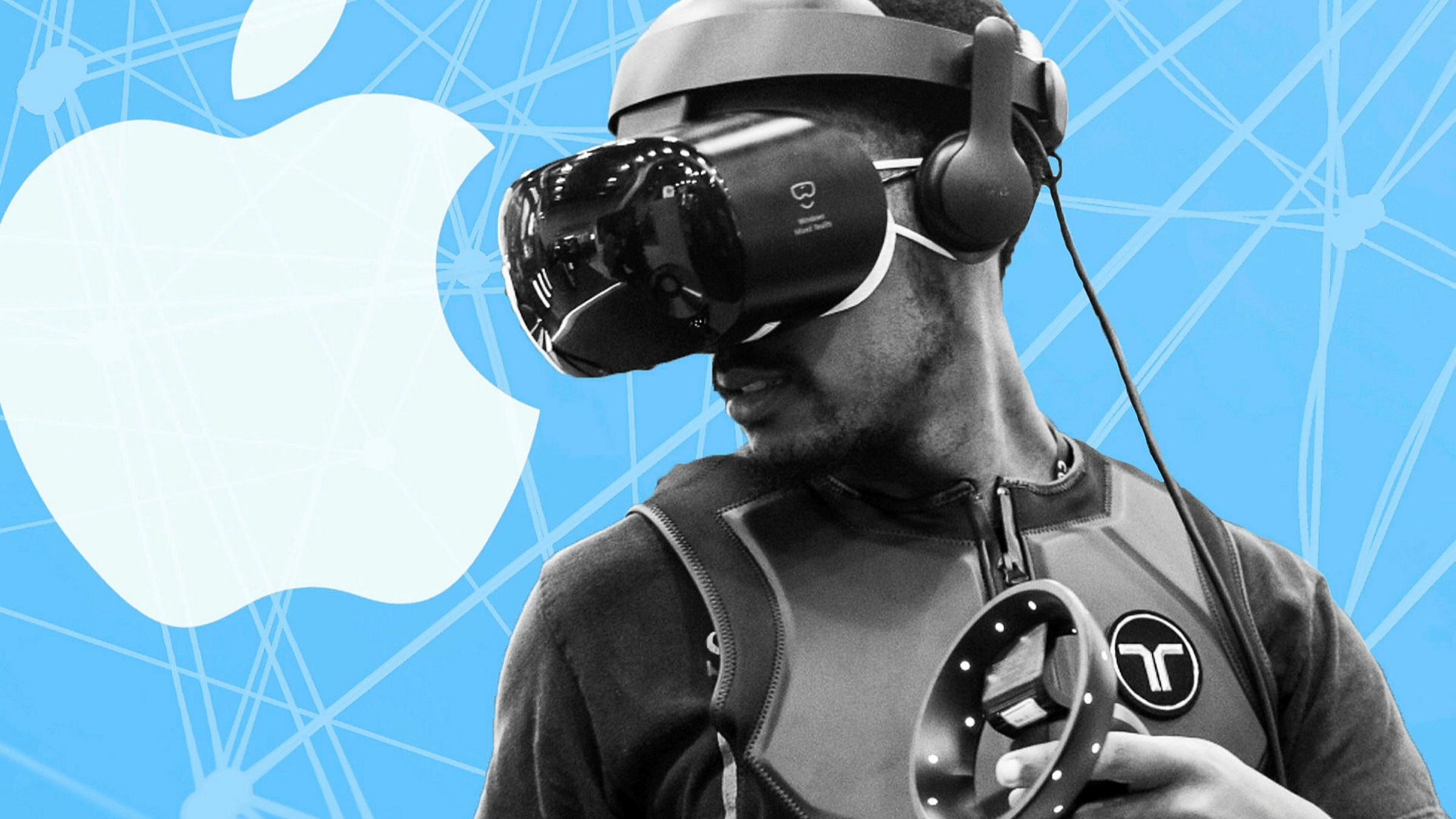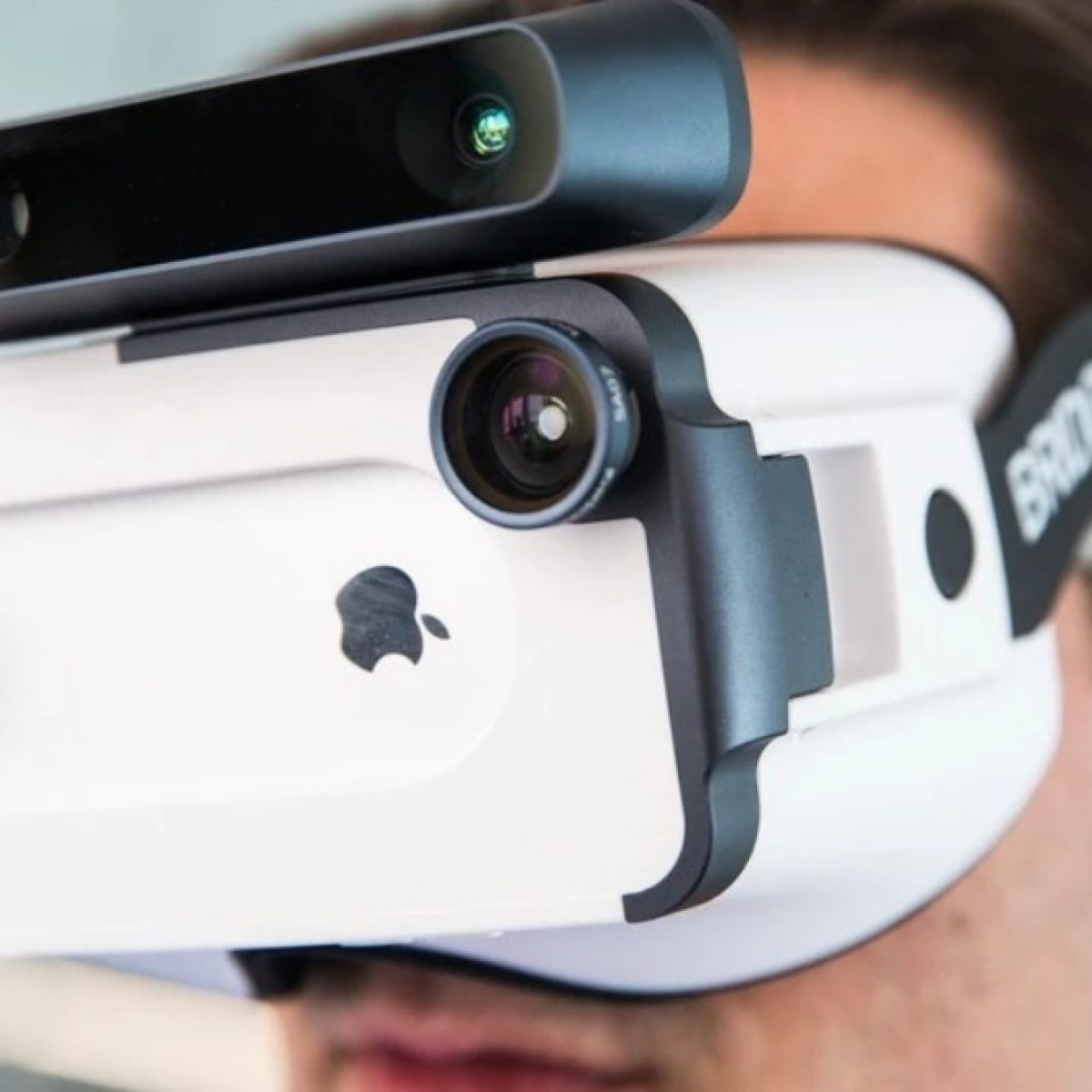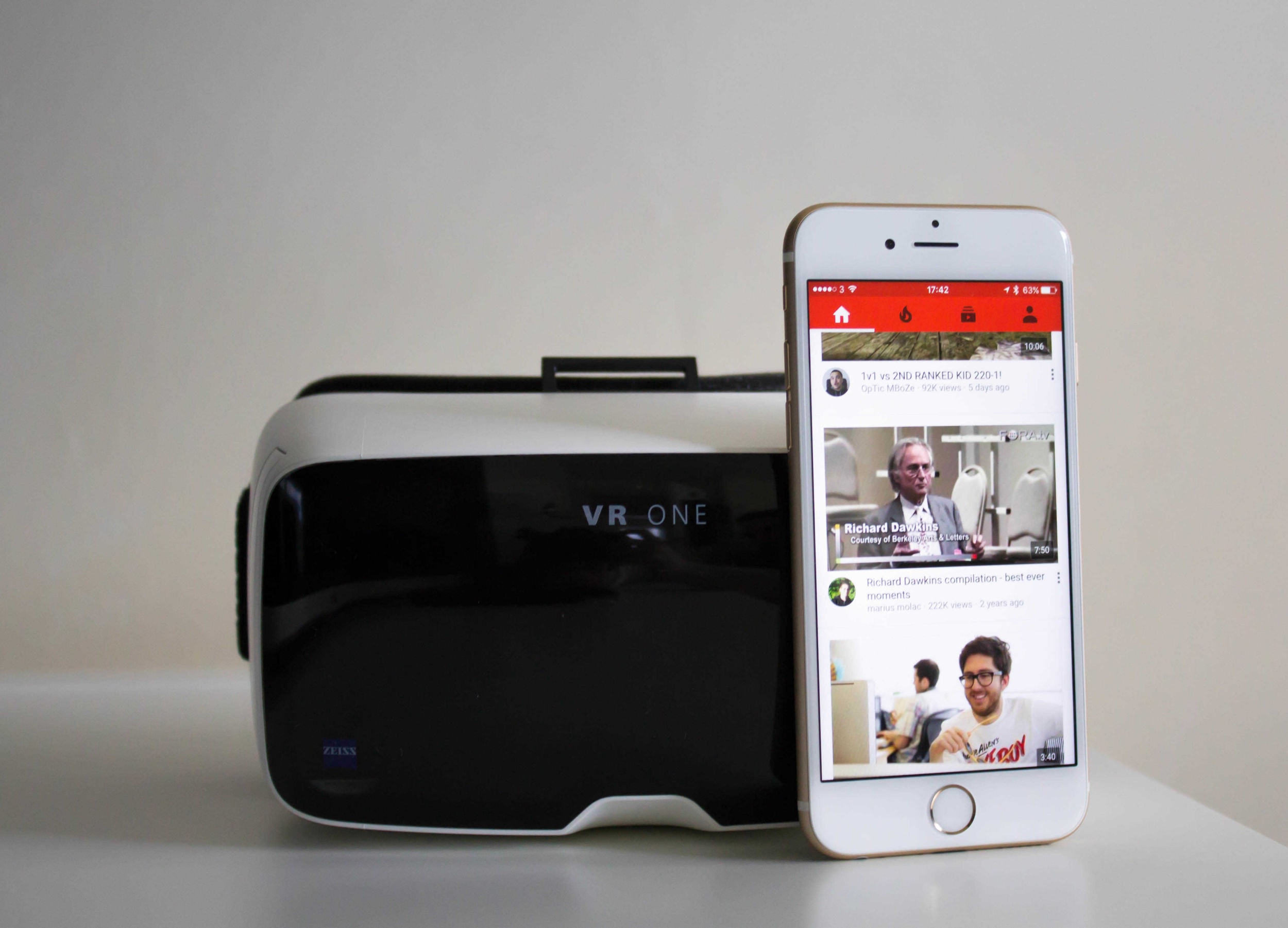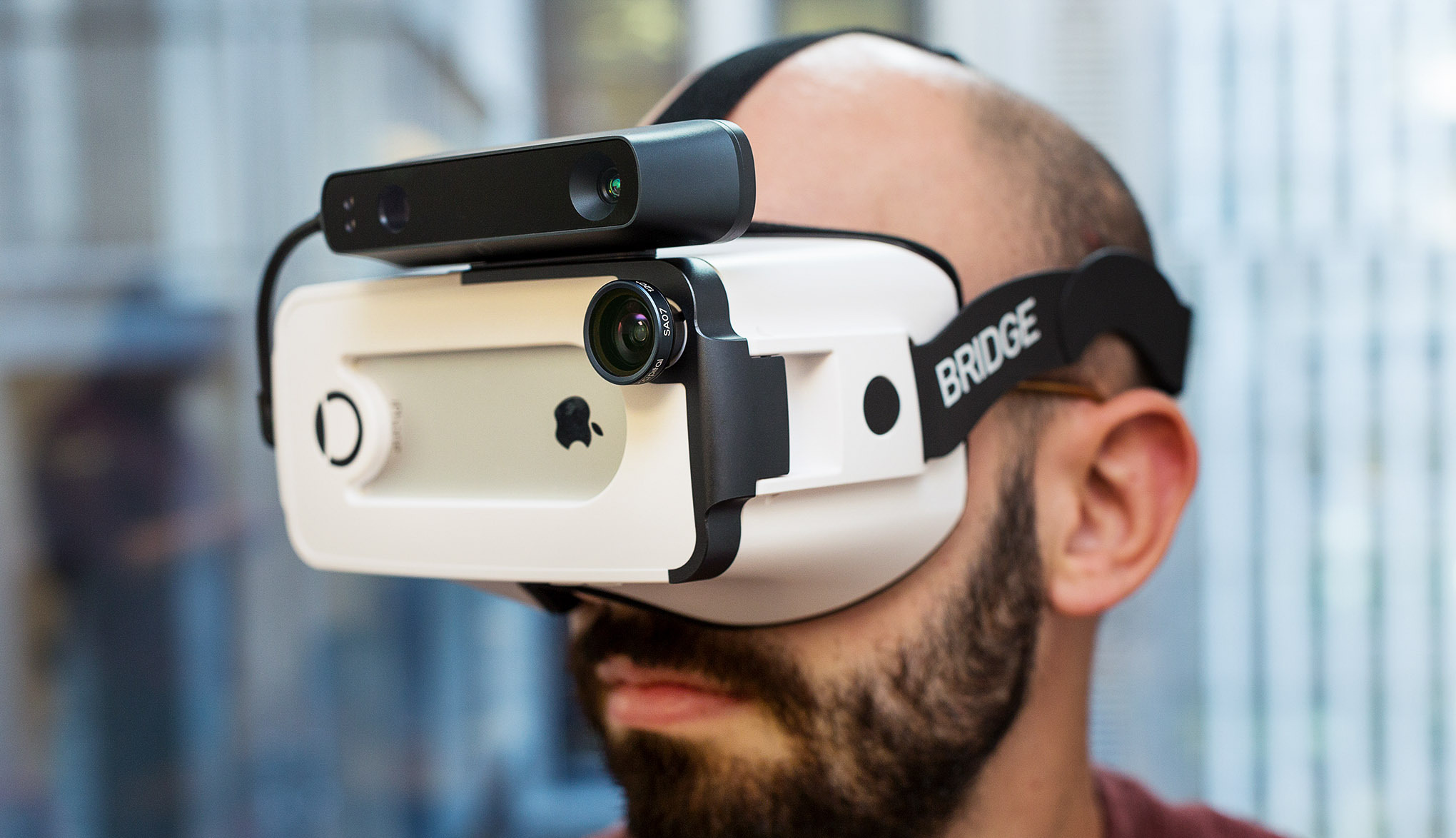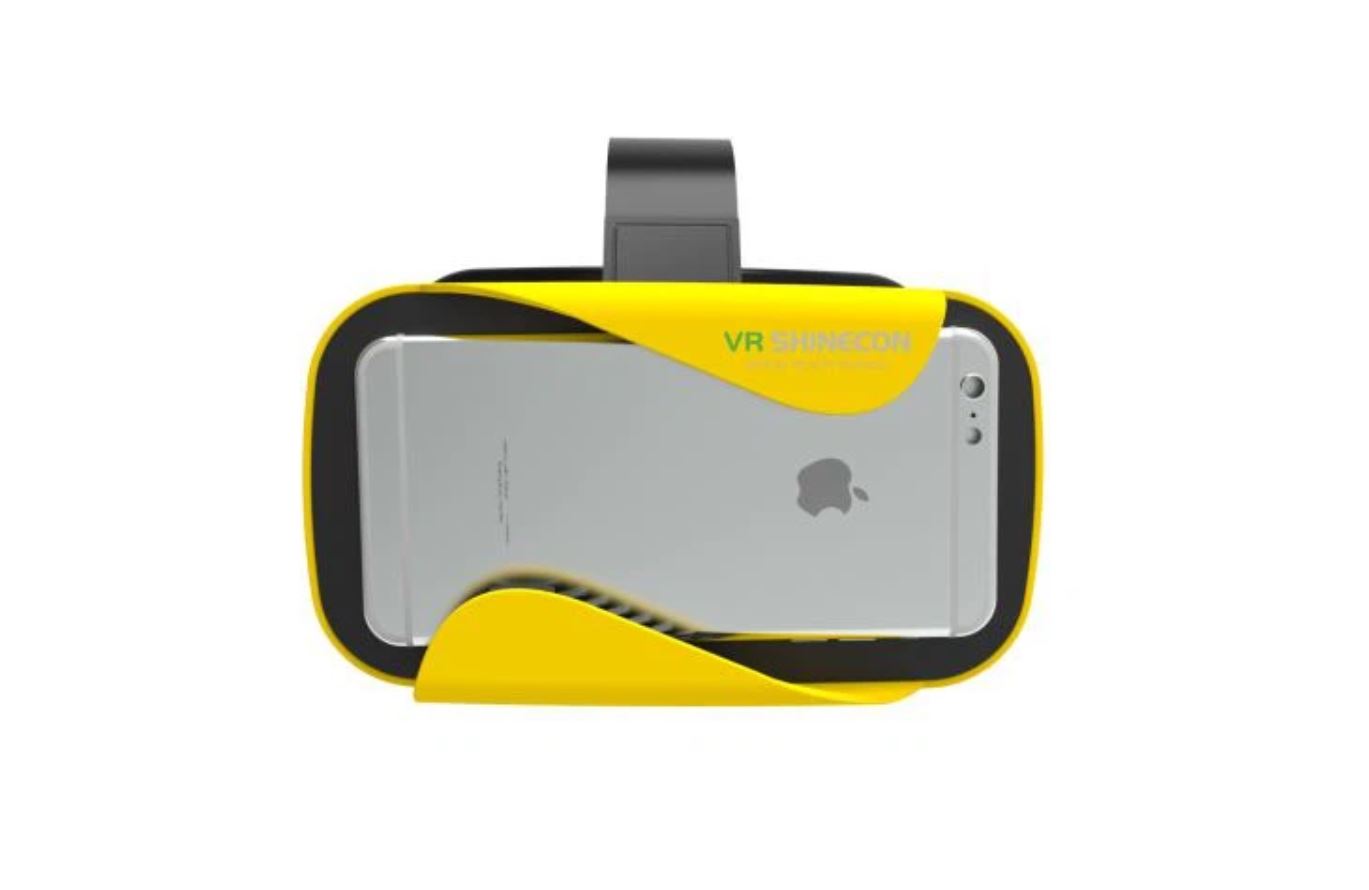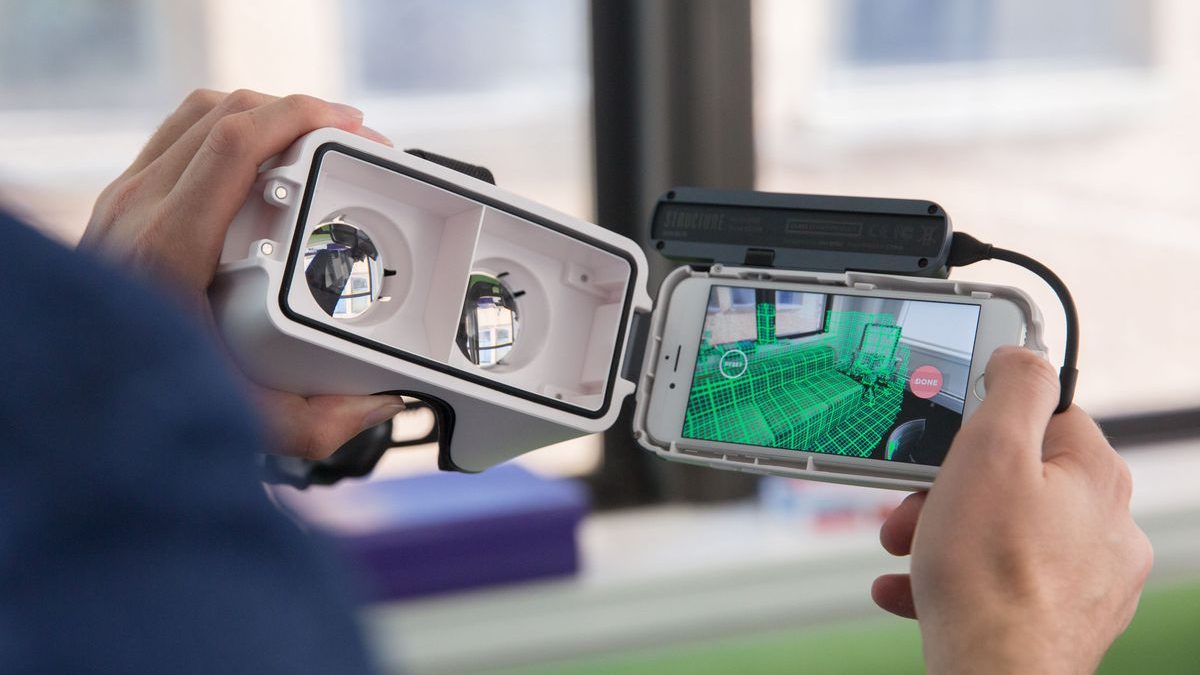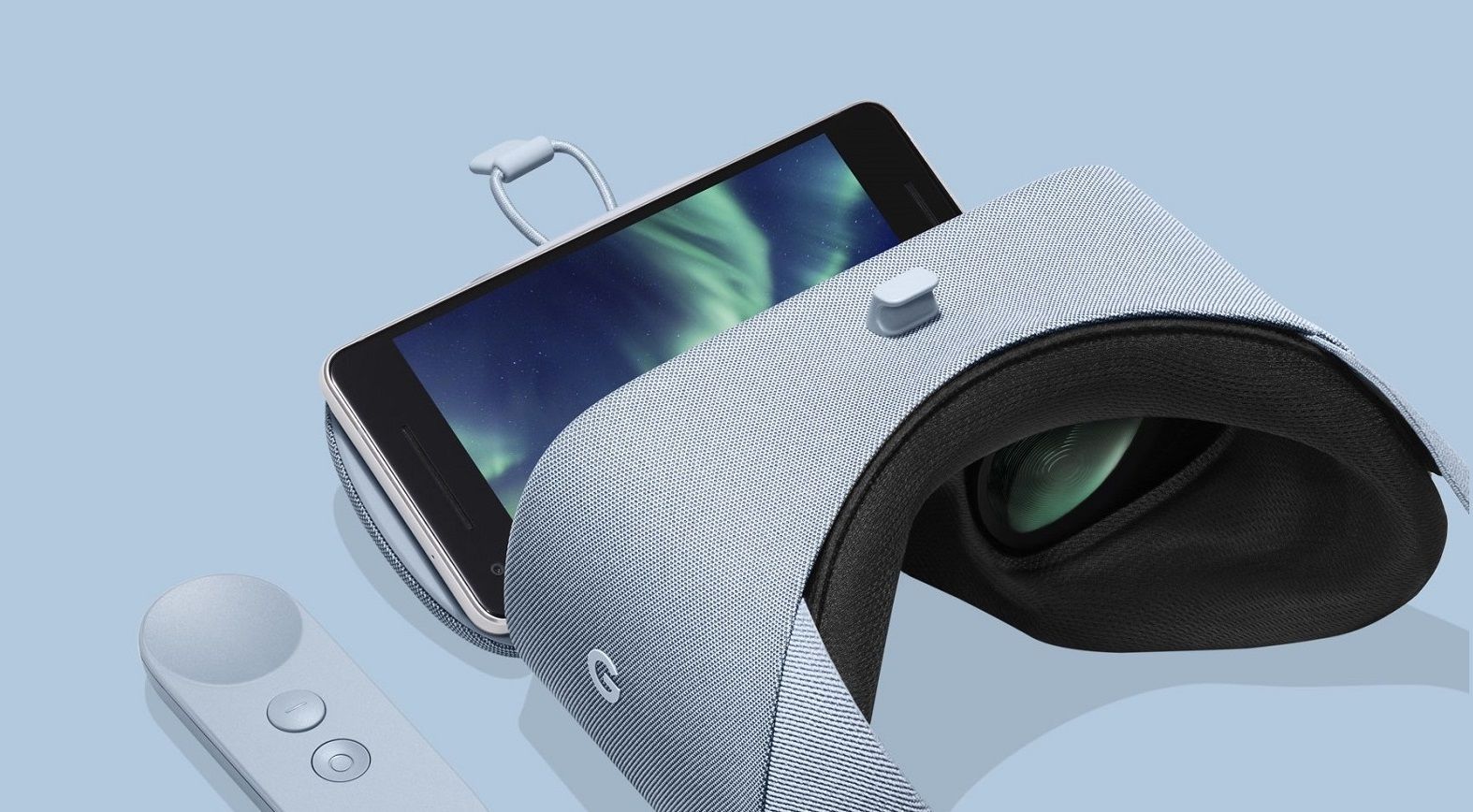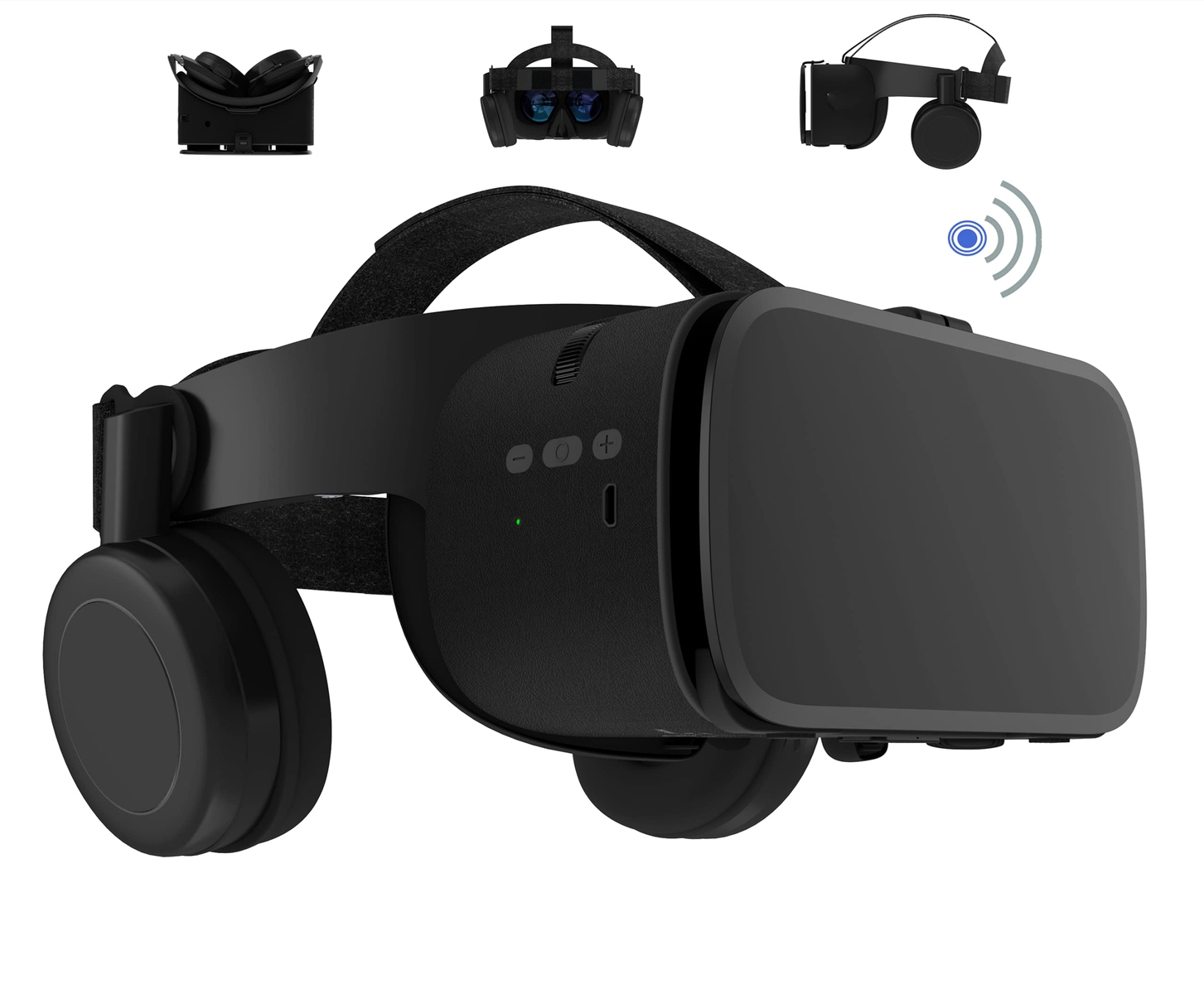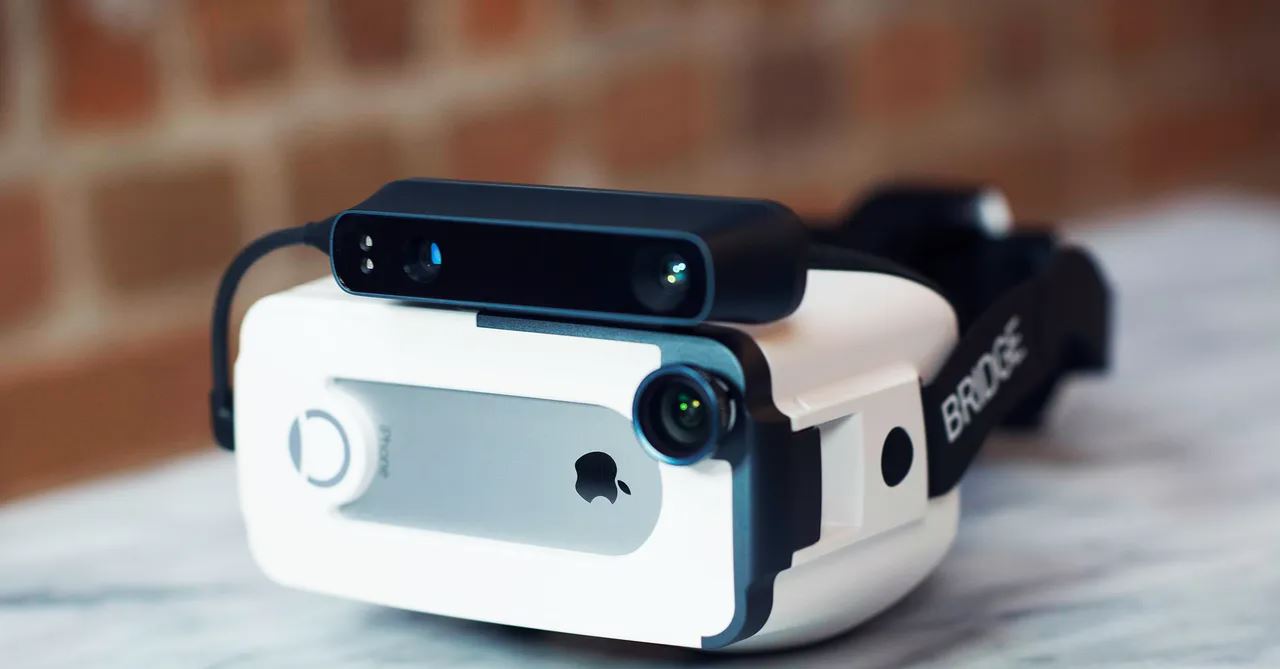Introduction
Welcome to the world of virtual reality (VR) and its compatibility with the iPhone. In recent years, the concept of VR has exploded in popularity, offering users an immersive and interactive digital experience. With the iPhone being one of the most popular smartphones in the market, it comes as no surprise that many people are curious about the compatibility between the iPhone and virtual reality devices.
Virtual reality technology has come a long way, and it now offers an incredible level of immersion. Whether you want to explore breathtaking virtual landscapes, play immersive games, or even watch movies and videos in a 360-degree format, virtual reality can transport you to a whole new world of experiences.
The iPhone, renowned for its cutting-edge technology and user-friendly interface, has opened up avenues for experiencing virtual reality like never before. With its powerful processors, high-resolution displays, and advanced motion sensors, the iPhone provides a solid foundation for a seamless virtual reality experience.
Compatibility is a key factor to consider when delving into the world of virtual reality with an iPhone. Fortunately, there are various types of virtual reality devices specifically designed to work with iPhones, allowing users to enjoy a multitude of VR applications and content.
In this article, we will explore the compatibility of the iPhone with virtual reality, discuss different types of VR devices available for iPhone users, and highlight popular VR applications that can be enjoyed on an iPhone.
So, if you own an iPhone and are wondering what virtual reality experiences are accessible to you, keep reading as we delve into the fascinating world of virtual reality and its compatibility with the iPhone.
Virtual Reality and iPhone
Virtual reality (VR) is a technology that creates a simulated environment through the use of visual and auditory stimuli. It immerses users in a digital world that feels incredibly real, enabling them to interact with the surroundings and experience a sense of presence.
The iPhone, with its powerful hardware and advanced features, is well-equipped to handle the demands of virtual reality. The iPhone’s high-resolution Retina displays provide crisp and vibrant visuals, while its powerful processors ensure smooth performance, even when running graphics-intensive VR applications.
In addition to its display and processing capabilities, the iPhone also incorporates advanced motion sensors such as accelerometers and gyroscopes. These sensors track the user’s movements and orientation, allowing for a more immersive and interactive virtual reality experience.
One of the key advantages of using an iPhone for virtual reality is the availability of a vast ecosystem of VR applications. The App Store offers a wide range of VR apps, including games, educational experiences, virtual tours, and more. Users can easily download these apps onto their iPhones and enjoy immersive content right at their fingertips.
Another aspect that enhances the virtual reality experience on the iPhone is its integration with other Apple products and services. Users can connect their iPhones to other devices like the Apple TV or AirPlay-enabled televisions to enjoy VR content on a larger screen. Additionally, the integration with services like Apple Music and iTunes allows users to access a vast library of VR-optimized media content.
Furthermore, the iPhone’s portability adds to the convenience of using virtual reality. Unlike dedicated VR systems, the iPhone can be easily carried anywhere, allowing users to experience VR on the go. This portability opens up new possibilities for virtual reality, whether it’s exploring virtual worlds during a commute or sharing the VR experience with friends and family.
With the continuous advancements in VR technology and the iPhone’s commitment to innovation, the integration between virtual reality and the iPhone will only continue to grow. As developers push the boundaries of what’s possible in virtual reality, iPhone users can expect even more immersive and exciting experiences in the years to come.
Compatibility of iPhone with Virtual Reality
When it comes to compatibility with virtual reality, the iPhone offers a range of options for users to explore. Thanks to its advanced hardware and extensive app ecosystem, the iPhone can seamlessly integrate with various virtual reality devices and applications.
One of the primary factors that determine compatibility is the operating system. The iPhone runs on iOS, which has become increasingly supportive of virtual reality. With the release of iOS 11 and subsequent versions, Apple introduced ARKit, a framework that allows developers to create augmented reality (AR) and virtual reality experiences specifically for iPhones and iPads. This expanded support for VR has led to an influx of VR apps on the App Store, providing iPhone users with a plethora of options to choose from.
Another aspect of compatibility to consider is the connectivity between the iPhone and virtual reality devices. Many VR headsets and devices are designed to connect to the iPhone via Lightning or USB-C ports. This direct connection ensures a stable and high-quality experience, as it allows for seamless communication between the iPhone and the VR device. Additionally, some VR devices may offer wireless connectivity options, allowing users to connect their iPhones over Bluetooth or Wi-Fi.
It’s also worth noting that compatibility can vary depending on the specific model of iPhone. Newer iPhone models tend to offer better compatibility with virtual reality devices, thanks to their improved processing power, graphics capabilities, and advanced sensors. However, even older iPhone models can still provide a satisfactory virtual reality experience, albeit with certain limitations.
Furthermore, the compatibility of the iPhone extends beyond VR headsets. The iPhone can also be used with VR cameras, allowing users to capture their own 360-degree photos and videos. These VR cameras are often designed to connect directly to the iPhone, enabling seamless integration and easy sharing of immersive content.
Overall, the compatibility of the iPhone with virtual reality is robust and continuously expanding. With a wide range of VR devices, apps, and content available, iPhone users can easily find options that suit their preferences and budget. Whether it’s gaming, entertainment, education, or creative endeavors, the iPhone offers a versatile platform for exploring the exciting world of virtual reality.
Different Types of Virtual Reality Devices for iPhone
When it comes to experiencing virtual reality on your iPhone, there are several types of devices available that can enhance your immersive experience. These devices range from VR headsets to VR cameras, each offering unique features and capabilities.
VR Headsets: VR headsets are the most popular and common devices used for virtual reality experiences. They are designed to fully immerse users in virtual environments by blocking out the real world and delivering visuals and audio directly to the user’s eyes and ears. There are different types of VR headsets available for the iPhone, including those that rely on the iPhone’s display and processing power, as well as standalone headsets that connect wirelessly to the iPhone.
VR Cameras: VR cameras, also known as 360-degree cameras, allow users to capture photos and videos from all angles, offering a fully immersive and interactive experience. These cameras are specifically designed to work with iPhones, providing seamless integration and easy sharing of 360-degree content. Users can capture their own VR content and relive their favorite moments in a more immersive way.
VR Controllers: VR controllers are handheld devices that allow users to interact with virtual environments. These controllers typically feature buttons, triggers, and motion sensors, enabling users to navigate through virtual worlds and manipulate objects within them. Many VR headsets for iPhones come with compatible VR controllers, enhancing the level of interactivity and immersion.
VR Accessories: There are various VR accessories available for iPhones that can enhance the virtual reality experience. These include items such as headphones for better audio immersion, haptic feedback devices for tactile feedback, and motion capture systems for more accurate tracking of movement. These accessories can further enhance the immersion and sensory experience of virtual reality on the iPhone.
AR Devices: While not strictly virtual reality, augmented reality (AR) devices are also worth mentioning. AR devices, such as AR glasses, overlay virtual elements onto the real world, creating a mixed reality experience. Some AR devices are designed to work with iPhones, allowing users to blend virtual objects with their surroundings, opening up new possibilities for gaming, education, and practical applications.
With the wide range of virtual reality devices available for the iPhone, users have the flexibility and freedom to choose the device that best suits their needs and preferences. Whether you’re looking for a fully immersive VR headset, a 360-degree VR camera, or other accessories to enhance your virtual reality experience, there are options available to cater to every interest and budget.
VR Headsets for iPhone
VR headsets are one of the most popular ways to experience virtual reality on an iPhone, providing users with an immersive and captivating visual and auditory experience. There are several types of VR headsets available that are specifically designed to work with iPhones, each offering its own unique features and capabilities.
1. Smartphone-based VR Headsets: These headsets utilize the iPhone’s display and processing power to deliver virtual reality experiences. They generally consist of a headset with lenses and a compartment to hold the iPhone. Users can insert their iPhones into the headset and access VR content through compatible apps. Smartphone-based VR headsets are typically affordable and portable, making them a popular choice for casual users.
2. All-in-One VR Headsets: These headsets are standalone devices that do not require a separate smartphone. They have built-in displays, processors, and storage, providing a complete virtual reality experience without the need to connect to an iPhone. Some all-in-one VR headsets also offer wireless connectivity options, allowing users to connect their iPhones for additional features or content. These headsets often provide a higher level of immersion and performance but come with a higher price tag.
3. Wireless VR Headsets: These headsets connect to the iPhone wirelessly, usually through Bluetooth or Wi-Fi. They offer convenience and freedom of movement, eliminating the hassle of wires. Wireless VR headsets are ideal for users who want to experience virtual reality without being tethered to their iPhones. They may come with additional features such as built-in sensors and controllers for a more interactive experience.
4. High-end VR Headsets: These headsets provide the most advanced and immersive virtual reality experiences. While they may not be specifically designed for iPhones, they are compatible with iPhones through adapters or third-party software. High-end VR headsets offer features such as high-resolution displays, precise tracking, and advanced motion controllers. However, they tend to be more expensive and require a powerful iPhone model to deliver optimal performance.
When choosing a VR headset for your iPhone, it’s essential to consider factors such as comfort, compatibility, visual quality, and user reviews. Look for headsets that have adjustable straps and cushioning, as well as lenses with adjustable focus. Consider the type and variety of VR content available for the headset, ensuring that it aligns with your interests and preferences.
Some popular VR headsets for iPhones include the Google Cardboard, Samsung Gear VR, Oculus Quest, and the PlayStation VR (with compatible software). These headsets offer a wide range of experiences, from gaming and entertainment to educational and creative applications.
With the ever-growing market of VR headsets for iPhones, the possibilities for immersive virtual reality experiences are endless. Whether you’re a casual user looking for an affordable smartphone-based headset or a tech enthusiast seeking a high-end wireless VR experience, there’s a headset out there to take your iPhone VR experience to the next level.
VR Cameras for iPhone
VR cameras, also known as 360-degree cameras, allow users to capture photos and videos from all angles, creating immersive and interactive content that can be experienced in virtual reality. These cameras are specifically designed to work with iPhones, offering seamless integration and easy sharing of 360-degree content.
1. Dual-Lens Camera Attachments: Dual-lens camera attachments are small devices that can be attached to the iPhone’s camera module. These attachments consist of two lenses positioned to capture a full 360-degree view. They work in tandem with specialized apps that stitch together the images or videos to create a seamless 360-degree panoramic view. These camera attachments are compact and portable, making them ideal for capturing immersive content on the go.
2. Standalone VR Cameras: Standalone VR cameras are independent devices that do not require a separate iPhone to capture photos and videos. They have built-in cameras and processors and can store the captured content internally or on removable memory cards. Some standalone cameras also offer wireless connectivity options for transferring the content to an iPhone. These cameras usually have more advanced features, such as higher resolution and better image stabilization, and are suitable for users who want a dedicated device for capturing immersive content.
3. Live-Streaming VR Cameras: Live-streaming VR cameras are designed to capture and broadcast live 360-degree content directly from the iPhone. These cameras typically connect to the iPhone via a Lightning or USB-C port and allow users to stream the immersive footage in real-time to platforms like YouTube, Facebook, or dedicated VR streaming services. They offer a unique way to engage with an audience and share experiences in real-time.
4. 360-Degree VR Camera Apps: In addition to physical cameras, there are several apps available on the App Store that can turn your iPhone into a 360-degree VR camera. These apps leverage the iPhone’s existing camera hardware and use advanced algorithms to stitch together multiple images or videos to create immersive content. While the quality may not be on par with dedicated VR cameras, these apps provide a convenient and cost-effective way to capture and create 360-degree content using your iPhone.
With VR cameras for iPhones, users have the opportunity to become content creators and capture their own immersive experiences. Whether it’s capturing breathtaking landscapes, memorializing special events, or sharing adventures with friends and family, VR cameras for iPhones provide a unique and immersive way to capture and relive moments in virtual reality.
Some popular VR camera options for iPhones include the Insta360 One X, Ricoh Theta series, GoPro Fusion, and the LucidCam. Each offers its own set of features, image quality, and compatibility with VR platforms and apps.
With the wide variety of VR cameras available for iPhones, users have the flexibility and freedom to choose the camera that best suits their needs and preferences. Whether you’re a casual user looking for a portable camera attachment or a content creator seeking a standalone VR camera, there’s an option out there to help you capture stunning 360-degree content using your iPhone.
VR Apps for iPhone
Virtual reality (VR) apps for the iPhone offer a wide range of immersive and interactive experiences, allowing users to explore virtual worlds, play games, watch 360-degree videos, and much more. These apps harness the iPhone’s powerful hardware and advanced capabilities to deliver captivating virtual reality experiences.
1. Gaming and Entertainment: VR gaming apps for the iPhone provide an entirely new level of immersion, allowing users to step into virtual worlds and interact with their surroundings. Whether it’s action-packed adventures, thrilling simulations, or casual puzzle games, there’s a vast collection of VR games available on the App Store. Additionally, there are also VR apps that provide immersive movie viewing experiences, allowing users to watch 360-degree videos and films as if they were in a virtual cinema.
2. Virtual Tours and Travel: VR apps can transport users to different parts of the world, allowing them to explore famous landmarks, museums, and natural wonders from the comfort of their home. These virtual tour apps offer 360-degree views and real-life audio tours, providing a unique and immersive travel experience. Whether you want to visit the Louvre Museum in Paris, walk the Great Wall of China, or explore the Great Barrier Reef, virtual tour apps have you covered.
3. Education and Learning: VR apps for education provide innovative and immersive learning experiences for users of all ages. From interactive anatomy lessons and virtual science experiments to historical simulations and language learning, these apps make learning engaging and memorable. VR offers a unique way to explore complex concepts and environments, allowing users to visualize and interact with the subject matter in a more hands-on manner.
4. Art and Creativity: There are VR apps for iPhone that allow users to unleash their creativity and create stunning virtual artwork. These apps provide tools and brushes in virtual reality, enabling users to paint, sculpt, and create 3D models in an immersive virtual environment. From virtual drawing and sculpting to 360-degree storytelling and animation, these apps offer a new medium for artistic expression.
5. Meditation and Relaxation: VR apps can also be used for mindfulness and relaxation purposes. These apps offer serene and immersive environments, allowing users to find tranquility and escape from the stresses of everyday life. Users can engage in guided virtual reality meditations, calming visual experiences, and soothing soundscapes to promote relaxation and mental well-being.
These are just a few examples of the wide range of VR apps available for the iPhone. Each app offers a unique experience in its respective genre, and new apps are constantly being developed to push the boundaries of virtual reality on the iPhone.
Whether you’re looking for entertainment, educational experiences, artistic exploration, or relaxation, there’s a VR app for almost every interest and preference on the App Store. So, grab your iPhone, put on a compatible VR headset, and get ready for a new level of immersion with these exciting VR apps.
Conclusion
The compatibility between the iPhone and virtual reality has opened up a world of immersive experiences for users. The iPhone’s powerful hardware, advanced motion sensors, and extensive app ecosystem have made it an ideal platform for exploring virtual reality. Whether it’s through VR headsets, VR cameras, or VR apps, iPhone users have a variety of options to choose from when it comes to experiencing virtual reality.
From gaming and entertainment to education and creativity, virtual reality apps for the iPhone offer a range of captivating experiences. Users can explore virtual worlds, play immersive games, watch 360-degree videos, take virtual tours, engage in educational simulations, create virtual artwork, and much more. The possibilities are limited only by the imagination of developers and users alike.
The compatibility of the iPhone with virtual reality devices is further enhanced by the integration of other Apple products and services. Users can connect their iPhones to Apple TVs or AirPlay-enabled televisions to enjoy VR content on larger screens. Integration with services like Apple Music and iTunes also allows access to a vast library of VR-optimized media content.
When selecting VR devices or apps for the iPhone, it’s important to consider factors such as compatibility, comfort, visual quality, and user reviews. Determine the type of experiences you’re interested in and choose devices or apps that align with your preferences and budget. With the wide range of options available, there’s something for everyone.
The world of virtual reality continues to evolve, and the compatibility between the iPhone and virtual reality is expected to grow even stronger in the future. As technology advances and developers push the boundaries of what’s possible, iPhone users can look forward to even more immersive and exciting virtual reality experiences.
In conclusion, the compatibility between the iPhone and virtual reality offers a gateway to new dimensions of entertainment, education, and creativity. With the versatility and power of the iPhone, combined with a vast array of VR devices and apps, users can immerse themselves in virtual worlds, explore new realities, and engage with content like never before.







